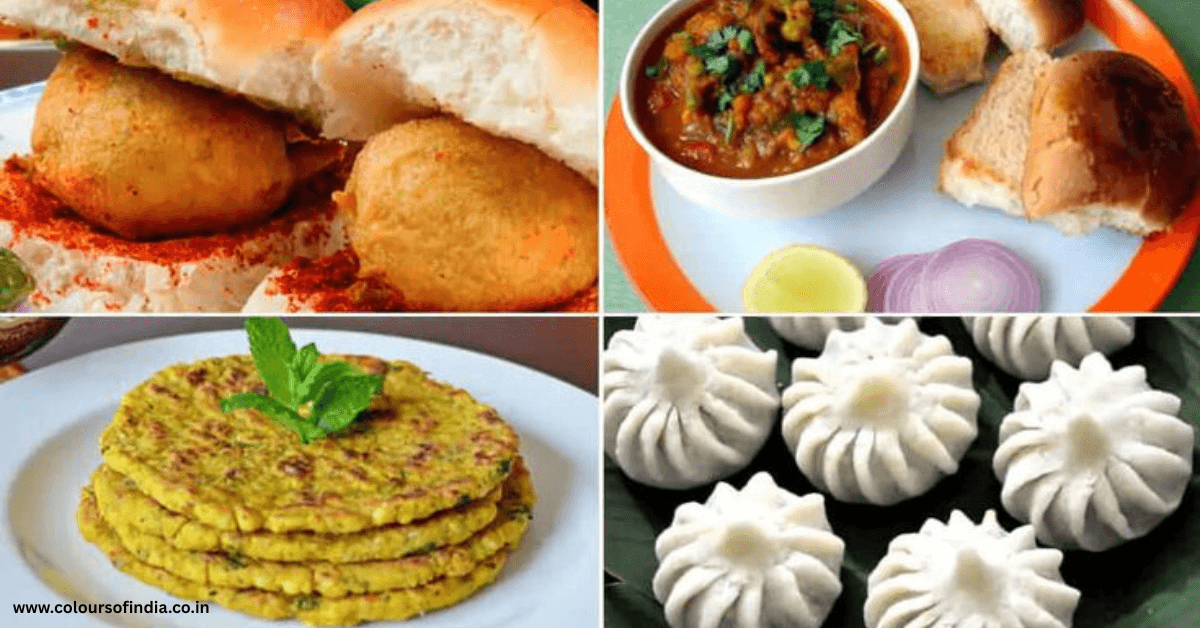Cultural Roots of Maharashtrian Cuisine – A Legacy on Every Plate
Maharashtra, the second most populous state in India, is not only known for its rich history, diverse landscapes, and vibrant festivals but also for its deeply rooted culinary traditions. The cultural roots of Maharashtrian cuisine run deep, drawing influence from geography, history, agriculture, religion, and social customs. Every dish carries a legacy – of regions, rulers, rituals, and the resilience of the people.
In this blog, we explore how Maharashtrian cuisine evolved, the elements that shaped it, and why it stands as one of the most diverse, balanced, and culturally significant food cultures in India.
🗺️ Geographical Influence – From Hills to Coastline
Maharashtra’s diverse geography significantly influences its food. The state stretches from the Sahyadri mountain ranges (Western Ghats) to the Konkan coastline, and deep into the Deccan plateau and Vidarbha.
Konkan Region (Raigad, Ratnagiri, Sindhudurg): Tropical climate and access to the sea led to the rise of seafood-based cuisine, coconut-rich gravies, and the use of kokum.
Western Maharashtra (Pune, Kolhapur, Satara): Fertile land promotes agriculture. Food here is often spicy, and dishes like Misal Pav, Tambda-Pandhra Rassa, and Bhakri dominate.
Marathwada and Vidarbha: Semi-arid climate, leading to sustainable meals using millets (jowar, bajra), legumes, and dry chutneys like thecha.
Urban Centers (Mumbai, Nagpur, Nashik): A melting pot of communities and global influences, leading to innovations in traditional cooking (e.g., Vada Pav, Bombay Sandwich).
🌾 Agriculture and Locally Available Ingredients
Cultural Roots of Maharashtrian Cuisine Cultural Roots of Maharashtrian Cuisine Cultural Roots of Maharashtrian Cuisine Cultural Roots of Maharashtrian Cuisine
Agriculture forms the backbone of Maharashtrian life, especially in rural areas. The cuisine evolved around what was grown locally, with seasonal produce and storage-friendly techniques shaping daily meals.
Staple grains:
Jowar (Sorghum) and Bajra (Pearl Millet) – Popular in drought-prone areas.
Wheat and Rice – Common in urban areas and Western Maharashtra.
Pulses & Legumes:
Toor Dal (Split pigeon peas) and Chana Dal form the base of iconic dishes like Varan, Amti, and Puran Poli.
Matki, Moong, Chawli – Used for Usal, Misal, and sprout curries.
Oils and Condiments:
Groundnut oil, mustard seeds, asafoetida, curry leaves, and garlic are everyday essentials.
Kokum, tamarind, and godambi (cashew fruit) are souring agents in coastal regions.
This strong farm-to-table connection ensured sustainability and freshness long before the concept became trendy.
📿 Religious and Ritualistic Influences

Maharashtrian food is deeply linked with religious practices, festivals, and ayurvedic principles. Certain ingredients and preparations are part of sacred traditions, especially during fasting, rituals, and festivals.
Key Ritual Foods:
Puran Poli – Offered during Holi, Gudi Padwa, and religious ceremonies.
Modak – Prepared on Ganesh Chaturthi as Lord Ganesha’s favorite sweet.
Shrikhand and Basundi – Festive desserts for Krishna Janmashtami and weddings.
Sabudana Khichdi, Upwas Thali – Special preparations during fasting (Ekadashi, Mahashivratri, etc.).
Even the act of eating follows traditions. For instance:
Meals served on banana leaves during rituals.
Sitting cross-legged on the floor while eating signifies humility and focus.
👪 Caste and Community Influence
Maharashtrian cuisine reflects community diversity across the state:
Chitpavan Brahmins – Known for subtle flavors and use of coconut, jaggery, and goda masala.
CKPs (Chandraseniya Kayastha Prabhus) and Pathare Prabhus – Rich seafood dishes and meat curries.
Marathas and Kunbis – Focus on millets, thecha, and rustic, spicy food.
Muslim communities – Bring influences like Nalli Nihari, Biryani, and Sheer Khurma.
Jains – Rely on satvik, onion- and garlic-free preparations.
Each community has preserved unique food traditions while contributing to the broader culinary identity of Maharashtra.
🔥 Traditional Cooking Methods
Maharashtrian households still hold on to ancestral cooking methods that preserve nutrients and enhance flavor:
Chulha (Clay stove) – Used in rural areas to slow-cook meals with a smoky flavor.
Iron kadhais and clay pots – Believed to retain iron and nutrients.
Grinding stones (pata-varvanta) – Used to make fresh masalas and chutneys.
These methods also promote mindful cooking – a practice that’s spiritual as well as practical.
🌶️ Spices, Masalas, and Taste Philosophy
Unlike North Indian food that often leans towards creaminess and sweetness, Maharashtrian cuisine balances heat, tang, and sweetness in unique ways.
Signature Masalas:
Goda Masala – A mild, aromatic blend with hints of cinnamon, sesame, and dried coconut.
Kolhapuri Masala – A fiery red blend with dry red chilies and garlic.
Malvani Masala – Coastal mix for fish and meat curries.
Taste in Maharashtrian cooking is a balance of all six rasas (flavors) from Ayurveda – sweet, sour, salty, bitter, pungent, and astringent.
🎉 Folk Influence and Food in Festivals
Folk life and festivals have deeply shaped food traditions. Every festival has its own cuisine tied to seasonal changes, agricultural cycles, and spiritual meaning.
Gudi Padwa – Begins with Neem-jaggery chutney symbolizing the dual nature of life.
Makar Sankranti – Marked by Tilgul (sesame-jaggery sweets) and the phrase “Tilgul ghya, god god bola.”
Nag Panchami – Celebrated with patole (rice cakes with coconut-jaggery filling).
Diwali – A grand celebration of sweets and savory snacks like chakli, karanji, shankarpali, and anarsa.
📖 Legacy Passed Through Generations
In Maharashtra, food is passed down orally and through experience. Recipes are rarely written – they’re taught by observation, repetition, and practice.
Every household has its own version of classics like varan, puran poli, or koshimbir. The way a mother grinds chutney, the way a grandmother folds a poli, or how masalas are roasted—all carry generational memory.
The cultural roots of Maharashtrian cuisine are not just about taste – they are about identity, survival, sustainability, and shared experience. It’s a cuisine that tells stories – of monsoons and markets, temples and terraces, farms and festivals.
Whether you’re savoring a spicy misal or a humble bowl of varan-bhaat, you’re partaking in a tradition that has nourished millions, not just in body but in spirit.
To read detailed information about Maharashtrian Food Culture Click here.
